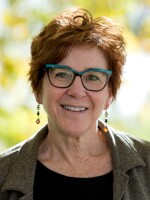Black-owned galleries display African-American art all year long. Many others tend bring out such work only during February, Black History Month. But that’s changing.
Recent shows bucking the trend include an exhibit opening Friday at the Philip Slein Gallery in the Central West End. African-American-themed work from private St. Louis homes comprises “Other Ways, Other Times: Influences of African-American Tradition from St. Louis Collections.”
Adrienne Davis contributed four pieces. She feels it’s important for St. Louis to view to these works, especially now. Davis noted that media have long been an essential part of moving the black struggle forward, from the publication of Harriet Beecher Stowe’s “Uncle Tom’s Cabin” in 1852 to images of police brutality televised during the 1950s and '60s.
“The pictures of the fire hoses and dogs and Emmett Till’s open casket really not only transformed a lot of thoughtful people in U.S. but also all over world,” Davis said.
Massive Response
“Other Ways” was originally envisioned as a small exhibit. A collaboration by Slein, gallery owner Jim Schmidt and World Chess Hall of Fame director Susan Barrett, the show is an extension to the HOF’s current “Living Like Kings” display.

“Living” explores the intersection of chess with hip-hop culture; the Slein exhibit examines historical and other traditions of African-American culture.
The idea was up and rolling in June. Then, on Aug. 9, Ferguson police officer Darren Wilson shot and killed unarmed teenager Michael Brown.
“St. Louis was not the same anymore,” Barrett said.
Suddenly, what began as a request to only a handful of collectors generated a massive response. “Word got around and people starting calling saying, ‘I want to do this, too,’” Barrett said.
Sixty works of art are now part of the diverse “Other Ways” exhibit. “It got so big that some collectors wanted to be in it but there’s just not enough room,” Barrett noted.
Philip Slein wants people to know that the show is not about the events of Ferguson or the more recent police shooting in the Shaw neighborhood of South St. Louis. But the shootings and subsequent cries for justice have affected the exhibit. "It's taken on a much more powerful significance,” Slein said.
The show includes a 60-print piece by Ellen Gallagher.

It also displays a Kara Walker painting that may surprise exhibit-goers. Walker is known for her black cut-paper silhouettes that speak to race, gender, sexuality violence and identity. But her painting in the "Other Ways" show makes a much softer statement, according to Jim Schmidt
“It’s a small piece, a watercolor. It’s very sweet and touching,” Schmidt said.
‘Hands Up, Don’t Shoot’ and More
Another current local exhibition, “Hands Up, Don’t Shoot,” directly responds to Michael Brown's death. Adrienne Davis noted how quickly the founder of the Alliance of Black Gallery Owners organized the show via social media. It opened last week in 14 venues.
“Freida Wheaton put together an amazing project,” Davis said.
While the work in "Hands Up" has a social-justice focus, Davis pointed out that's not the case with every piece of African-American work.
“Not all black art takes up these issues,” Davis said. “But overwhelmingly, it does. And it’s so important right now.”
The “Hands Up, Don’t Shoot” exhibitions continue through Dec. 20.
On Friday, Oct. 31, the St. Louis Art Museum opens an exhibit by artist Nick Cave. Cave’s “Soundsuits” — wearable sculptures made of found objects — and his videos and other work speak to the African diaspora.
This spring, an April 24 symposium at Washington University will examine the impact of painting, photography and film on our understanding and chronicling of the civil rights movement.
THE BASICS
‘Other Ways, Other Times: Influences of African-American Tradition from St. Louis Collections
Where: Philip Slein Gallery, 4735 McPherson Ave., 63108
When: Opening reception 6-9 p.m. Friday, Oct. 24; runs through Nov. 22
How much: Free
Information: Philip Slein Gallery website
This article was originally published on Wednesday, Oct. 22.
“Cityscape” is produced by Mary Edwards and Alex Heuer and sponsored in part by the Missouri Arts Council, the Regional Arts Commission, and the Arts and Education Council of Greater St. Louis.






